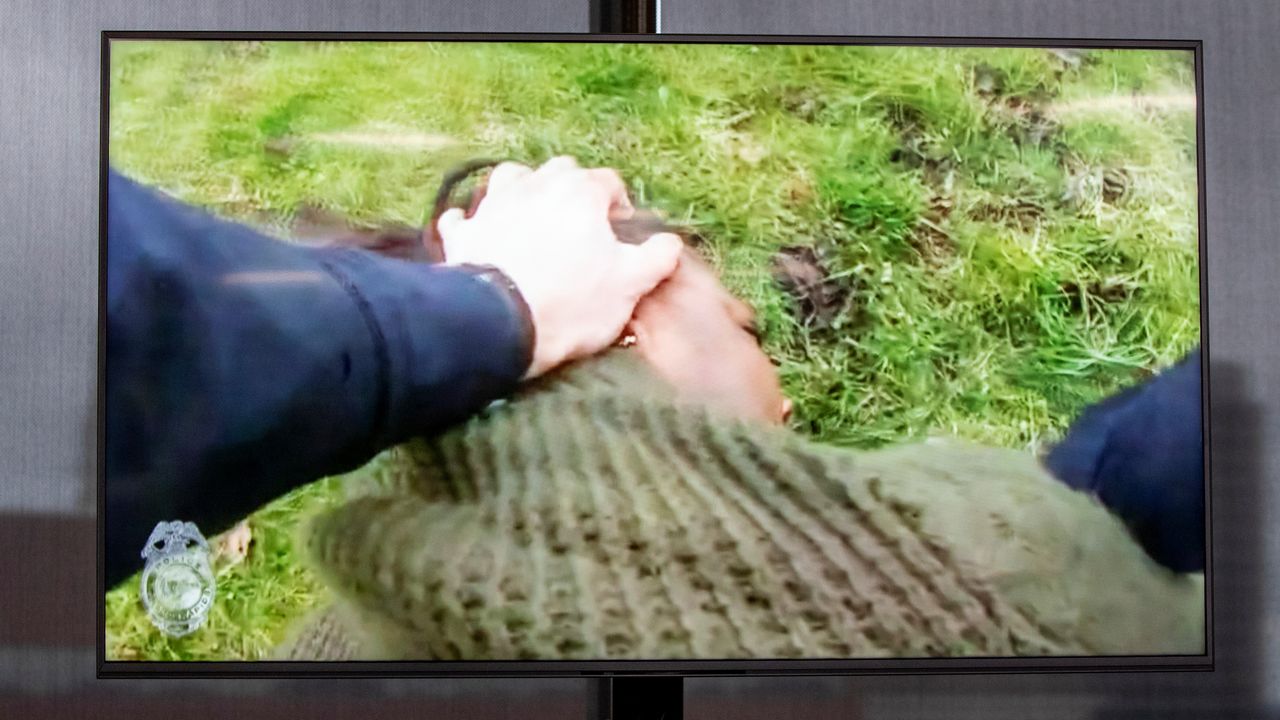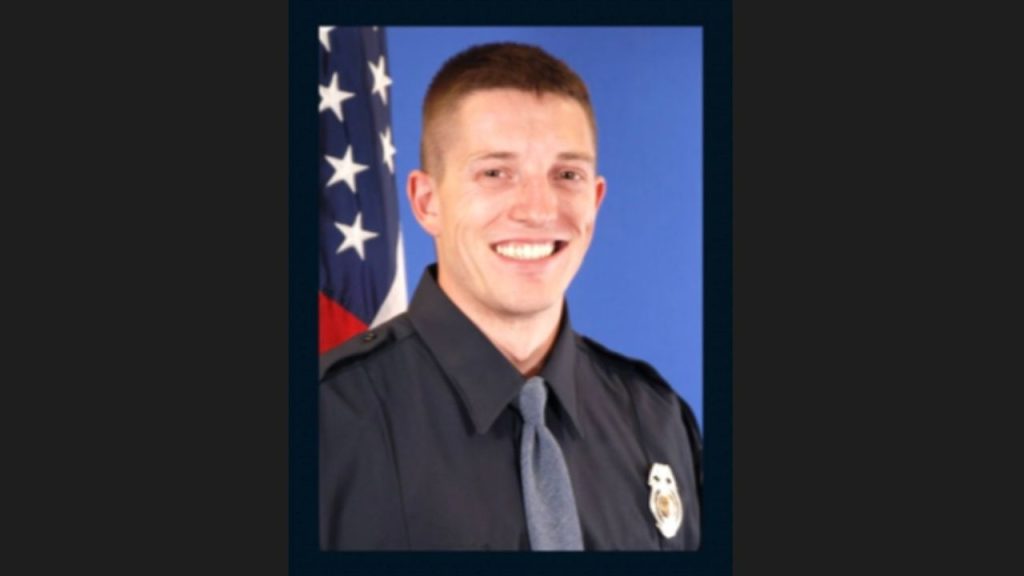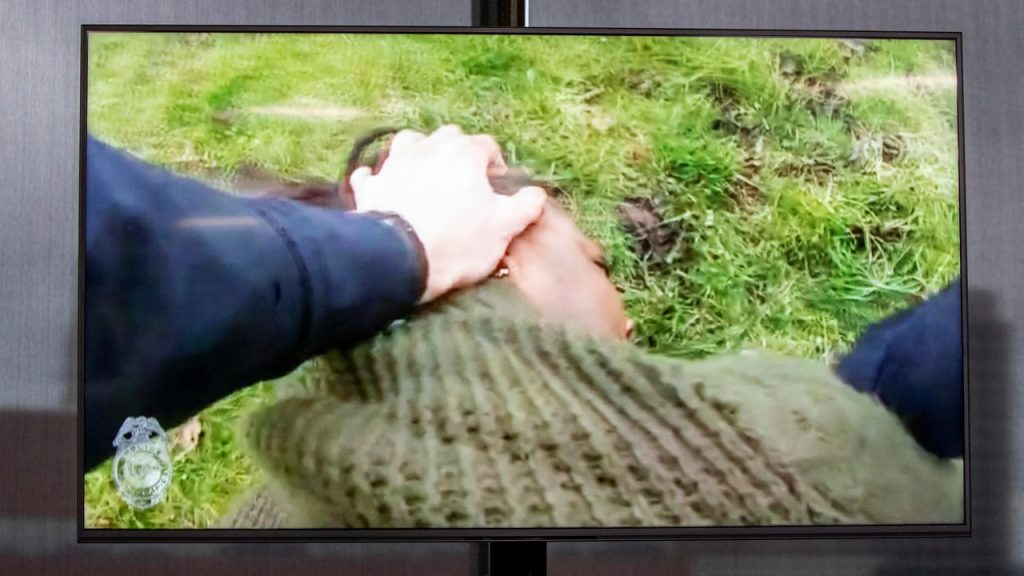
Michigan court rules former cop can stand trial for murder of Patrick Lyoya
By Michael Anders.
On January 25, a panel of judges for Michigan’s Court of Appeals ruled that Christopher Schurr can stand trial for killing Patrick Lyoya. The decision comes nearly two years after then-Grand Rapids Police Officer Schurr shot Lyoya in the back of the head during a traffic stop on April 4, 2022.
The Court of Appeals has reaffirmed an October, 2022 ruling by 61st District Court Judge Nicholas Ayoub, who ruled that the Kent County prosecutor’s office had established probable cause to charge Schurr with second-degree murder.

Judges Kathleen Feeney, Colleen O’Brien, and Brock Swartzle made up the panel that examined Schurr’s appeal of Ayoub’s ruling. Swartzle dissented, while O’Brien and Feeney determined, “We agree that there is at least sufficient evidence presented at the preliminary examination to establish probable cause that defendant’s actions did not satisfy the standards for use of deadly force in self-defense.”
Lyoya, a 26-year-old refugee from the Congo, was driving with a friend when Schurr stopped him for a problem with his license plate. After Schurr informed him that he was under arrest, Lyoya resisted and a struggle ensued. When Schurr had Lyoya face down on the ground, he drew his gun and shot Lyoya in the back of the head. It was only after residents protested throughout Grand Rapids that the police released chilling footage showing the whole encounter, including when Schurr fired the fatal shot.
Schurr’s defense team appealed the district court’s decision on the grounds that Schurr, as a police officer, had an indisputable right to kill Lyoya. According to the majority opinion, they argued “that, because Lyoya was a felon [presumably for resisting arrest], defendant as a police officer had the immediate right to resort to deadly force. Defendant argues that the district court and circuit court erred when they imposed a necessity requirement on the use of deadly force to apprehend a fleeing felon because the element of necessity does not apply to police officers.”
In their 25-page opinion, Feeney and O’Brien demonstrated that, in fact, the police do not have the right to kill with impunity. “[Schurr’s] argument on its face would suggest that whenever a police officer is met with force in making an arrest, the officer is always justified in using force, including deadly force, in order to effectuate an arrest. We reject this blanket rule, concluding that use-of-force in making an arrest is more nuanced than defendant’s brief suggests.”
After a review of the legal precedent, Feeney and O’Brien concluded, “Defendant’s claim that the necessity element does not apply to police officers is unsupported by the law.”

They cite the decision of the Michigan Supreme Court in People v. Gonsler, a case where a moonshiner shot and killed a man who was robbing his garage. The court ruled that the prosecutor in the case did not violate the law by instructing the jury, “Both officers and private persons seeking to prevent a felon’s escape must exercise reasonable care… and it is only where killing him is necessary to prevent his escape, that the killing is justified, and it is for you as jurors to determine from the evidence in this case the existence or absence of the necessity. If the killing is not justifiable, it is either murder of manslaughter.”
In the Michigan Supreme Court case People v. Doss, where the defendant was a police officer, “the court explained that the officer could only use deadly force under the principles applicable to a claim of self-defense” and “like a private citizen, the police officer who claims self-defense must have reasonably believed himself to have been in great danger and that this response was necessary to save himself therefrom.”
In the United States Supreme Court case Tennessee v. Garner, the court ruled that “a police officer may not seize an unarmed, nondangerous [sic] suspect by shooting him dead” and that the officer must have “probable cause to believe that the suspect poses a threat of serious physical harm, either to the officer or others.”
Feeney and O’Brien concluded “that a police officer would be privileged to use deadly force to apprehend a fleeing felon if―and only if―the use of deadly force was necessary to prevent the felon’s escape.”
Based on a review of all the evidence presented at the probable cause hearing, they found that “the district court did not err when it determined that there was evidence presented at the preliminary examination that both supported and refuted defendant’s claim that he shot Lyoya in self-defense. The district court properly concluded that it was for the jury to resolve any conflicts in the evidence.”
Schurr’s attorneys also argued that his Taser, which was trapped between Lyoya and the ground when Schurr killed him, qualified as a dangerous weapon “per se.” This would mean that, for legal purposes, a Taser is a dangerous weapon by definition and regardless of the circumstances. Feeney and O’Brien pointed out that both Taser probes had been discharged and that there was no evidence that Lyoya had tried to use it against Schurr. Therefore, they concluded, it is up to a jury to decide whether it was a dangerous weapon in this case.
It is on this point that Swartzle dissented. According to him, a Taser should be considered a dangerous weapon per se, because it has a “drive-stun mode.” This is an alternate mode which Tasers have that can stun a person from contact with the weapon without having to fire it. Swartzle did not address the fact that the odds are miniscule that Lyoya would have even known that such a mode existed, or the fact that the Taser was trapped between his body and the ground when Schurr killed him.
Despite the ruling, Kent County Prosecutor Chris Becker advised “that this does not imply the case will go to trial any time soon.” Becker expects that Schurr’s defense team will appeal the decision to the Michigan Supreme Court, which they have 56 days to do.
After the Court of Appeals decision was announced Ven Johnson, a lawyer representing Patrick Lyoya’s family in a lawsuit against Schurr, told Fox 17, “The Lyoya family remains distraught about the cold-blooded killing of their son, and any of these delays adds more insult to injury, as it would with any parent, any family member, of someone wrongfully murdered.”
He told the Detroit Free Press, “The Lyoya family welcomes the news that Christopher Schurr’s appeal has been denied, clearing the path for a criminal trial in the murder of Patrick. This marks a positive step towards justice. The family recognizes that there’s a substantial journey ahead, remaining distraught over their loved one. They can’t help but be reminded that Schurr can enjoy freedom at home on bond while Patrick lies in a grave. As the trial moves forward, the family anxiously awaits their day in court, not only in the criminal proceedings but also in our ongoing civil lawsuit.”
[This article was originally published by WSWS here on January 29, 2024]

